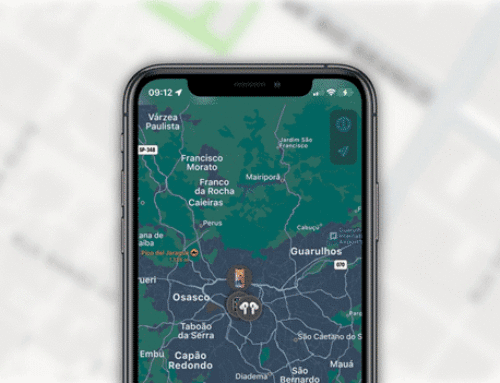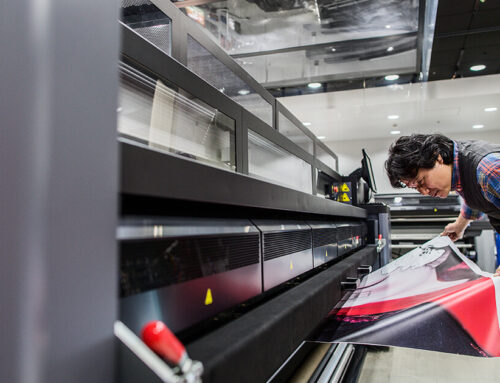Intelligent chatbots will continue to be the on-ramp to an enterprise AI strategy for many companies, but other AI use cases will be explored across a wide swath of teams and industries. Here’s what to watch for in the AI space in 2019.
Enterprise use of artificial intelligence will take a huge step forward over the next year. Rapid adoption of AI and related technologies such as machine learning is expected, and experiments will be seen across various departments and industries.
“Companies will experiment with AI in a wide variety of settings and use cases,” says Natalia Vassilieva, senior research manager at Hewlett Packard Labs. However, expect it to be difficult to leverage the technology, as it requires a lot of trial and error. “But eventually you will get it right,” she says.
We interviewed a range of AI experts on what to expect in 2019. Here’s what they said.
Growth rate and spending
Most research analysts see growth coming in the AI industry, with Gartner predicting the global business value from AI—including customer experience value, new revenue, and cost reductions—will reach $1.9 trillion in 2019, up from $1.2 trillion this year and $692 billion in 2017. Even with the pace of growth slowing after 2019, global value will reach $3.9 trillion in 2022, Gartner projects.
IDC, meanwhile, projects an annual growth rate in AI-related revenue alone of more than 37 percent through 2022, with more than $77 billion in global revenue by then.
That’s a lot of investment, financially and in human terms. What have businesses spent their AI money on so far? According to IDC, in 2018, companies spent the most on automated customer service agents, or chatbots, followed by automated threat intelligence and prevention systems and then sales process recommendation and automation.
Adoption and experimentation
Companies will look to use AI in industry-specific ways in the next year. AI-powered IT automation should also be a major growth area, because almost every company can benefit, says Marianne D’Aquila, research manager of cognitive systems for IDC’s customer insights and analysis group. “There’s no ‘one size fits all,'” she adds. “What we’re seeing is AI is proliferating in a variety of different use cases, in a variety of different ways.”
Vassilieva adds that we can expect to see a focus on AI use cases that are easy to replicate, such as video surveillance, fraud detection, and quality control in manufacturing.
Increased chatbot interactions
If you haven’t engaged with a chatbot yet, you will.
Chatbots will remain the largest use case for AI systems as companies look to use them to supplement or replace customer service staff, says D’Aquila.
Over the next year, experts say more knowledge workers and sales reps will begin using AI and other automation tools to improve results.
“Virtual assistants will not replace people but rather work alongside reps to offload manual, repetitive, and error-prone tasks such as scheduling calls, qualifying leads, following up, and even handling objections,” says Ilan Kasan, CEO of Exceed.ai, which offers an AI-powered sales development product. “Reps will get involved as soon as the deal is qualified and a human is required to close.” With machine learning, AI-powered sales assistants will become smarter by learning from humans, he adds.
Just as intelligent chatbots can help external customers with common questions, they can do the same for HR departments, says Andy Peart, chief marketing and strategy officer at Artificial Solutions, a conversational AI vendor. For example, HR teams at large companies handle vast numbers of queries annually. “The information and answers are there; they’re just difficult for time-poor employees to access,” he says.
Conversational AI chatbots “can understand the multiple ways employees might ask the same question, immediately source the relevant content, access back-end systems as appropriate, and respond consistently,” says Peart. A smart HR chatbot could answer questions like, “How many vacation days do I have left this year?”
AI intelligence has room to grow
Over the next year, the AI industry will see some evolution in frameworks for training deep learning models.
“Most AI is still weak AI, which means models are focused on performing a particular task,” says Emrah Gultekin, CEO of Chooch Intelligence Technologies, an AI-based visual recognition vendor. “Strong AI is when the varying neural networks and models start working together so that these systems can operate in versatile environments.”
Most AI chatbots are also still fairly simple systems, says Vassilieva, and have “plenty of space to grow” to get more conversational.
Peart agrees. Conversational AI covers much more than the relatively dumb customer service chatbots many companies have deployed so far, he says. Forward-looking companies will try to connect smart conversational AI systems to massive amounts of internal data that can train them to be smarter and more sophisticated.
As smart bots become more intelligent, they will be able to capture more data during conversations with customers, giving companies a wealth of information. “It’s like having a focus group at your fingertips,” says Peart.
There is, however, a potential downside to this rise of chatbots. During the next year, cybercriminals will create malicious chatbots in an attempt to use social engineering to trick victims into clicking on links, downloading files, or sharing private information, says Corey Nachreiner, CTO at security vendor WatchGuard.
While chatty AIs can be quite useful, “lifelike AI chatbots also offer new attack vectors for hackers,” he adds. “A hijacked chatbot could misdirect victims to nefarious links rather than legitimate ones. Attackers could also leverage web application flaws in legitimate websites to insert a malicious chatbot into a site that doesn’t have one.”
Other use cases to proliferate
Many companies are moving ahead with internal automation projects. In recent years, cybersecurity vendors have been experimenting with AI-powered tools to track attacks and malware, and healthcare providers have used AI tools to help diagnose diseases and read scans.
Many AI experts expect the technology to grow in those use cases, but some also see an AI expansion into other areas, such as commodity trading. AI can help companies trading in agricultural products and mined materials, says Janette Barnard, vice president of sales at analytics software vendor DecisionNext.
“Companies in these industries make billion-dollar bets … that are based on an expected view of commodity market price movement, but even the most seasoned market experts forecast commodity prices with limited tools and varying results,” Barnard says. “In markets with high market volatility, strong market cycles, and low margins, applying machine learning and artificial intelligence to forecasting commodity market prices provides a strong competitive advantage.”
Machine learning can help these commodity trading companies merge their own market insight with quantitative forecasting models, capturing “the best elements of the human and the machine for a better outcome,” Barnard adds.
Using AI for internal quality control and system maintenance is another area ripe for growth, says IDC’s D’Aquila. And just this year, IDC began watching a new use case in which companies use AI to model new products or design new manufacturing lines or even entire factories. Using AI, companies “over time [can] make that manufacturing line work better and better,” she says.
Vassilieva also looks forward to some AI hardware breakthroughs—if not in 2019, then shortly thereafter. Several hardware companies are working on products that can handle bigger AI jobs or do them more efficiently, she says. With improved hardware designed specifically for the math behind deep learning, AI systems will also spring forward.
Take the leap
While some experts say the full benefits of AI are still many years away, others suggest that many companies can now benefit from the technology, even in its infancy. In the next year, many companies that haven’t yet taken the leap will do so, and others will expand on their AI investments, says Faith Kubicki, content marketing manager at IntelliChief, an AI-based enterprise content management software provider.
AI can have the biggest impact when companies do more than automate one or two processes, Kubicki says. In some cases, companies have seen a return on their AI investment within a year.
“When companies use AI across several departments—like accounting, production, HR, and logistics—they tend to see the biggest transformation,” Kubicki adds. “Now that we’re approaching 2019, AI is no longer a crazy idea that sounds like a sci-fi movie.”
Artificial intelligence trends: Lessons for leaders
- AI experts see huge growth in AI adoption during 2019.
- Intelligent chatbots will continue to be an entry point to AI for many companies.
- The growing use of chatbots raises concerns about rogue AIs launched by cybercriminals.
Destination url: https://www.hpe.com/us/en/insights/articles/artificial-intelligence-adoption-new-use-cases-will-be-the-focus-in-2019-1812.html








